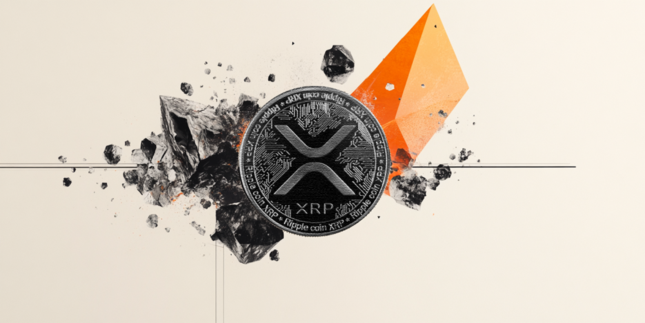- AUD/USD falls sharply to near 0.6650 amid strength in the US Dollar.
- Traders pare Fed large interest rate cut bets as US recession fears diminish.
- A sharp deflation in China’s PPI weighs on the Australian Dollar.
The AUD/USD pair slides to near 0.6650 in Monday’s North American session. The Aussie asset weakens as the US Dollar (USD) extends its recovery, with traders paring Federal Reserve (Fed) large interest rate cut bets on diminished United States (US) recession fears. The US Dollar Index (DXY), which tracks the Greenback’s value against six major currencies, jumps to near 101.60.
Fears of the US entering a recession receded after the release of the Friday’s Nonfarm Payrolls (NFP) data for August, which indicated that the pace of slowdown in the job growth in not as fast as it appeared in July figures. The data showed that US employers hired 142K job-seekers in August, fewer than estimates of 160K but significantly higher than the prior release of 89K.
Moderate growth in the US job market forced traders to pare bets supporting large interest rate cuts from the Federal Reserve (Fed) this month. According to the CME FedWatch tool, the possibility for the Fed reducing interest rates by 50 basis points (bps) to 4.75%-5.00% in September is 25%, while the rest favors a 25-bps interest rate cut.
Going forward, investors will focus on the US Consumer Price Index (CPI) data for August, which will be published on Wednesday. The US inflation data will significantly influence market speculation for how much the Fed will cut interest rates this month. Monthly headline and core inflation are estimated to have grown steadily by 0.2%. Annual headline CPI is expected to have risen at a slower pace of 2.6% from the former release of 2.9%.
In the Asia-Pacific region, the Australian Dollar (AUD) remains under pressure due to rising concerns over China’s economic growth. China’s CPI grew at a slower pace, and its Producer Price Index (CPI) deflated at a faster pace in August, which also weighed on antipodeans, being their leading trading partners.
Australian Dollar FAQs
One of the most significant factors for the Australian Dollar (AUD) is the level of interest rates set by the Reserve Bank of Australia (RBA). Because Australia is a resource-rich country another key driver is the price of its biggest export, Iron Ore. The health of the Chinese economy, its largest trading partner, is a factor, as well as inflation in Australia, its growth rate and Trade Balance. Market sentiment – whether investors are taking on more risky assets (risk-on) or seeking safe-havens (risk-off) – is also a factor, with risk-on positive for AUD.
The Reserve Bank of Australia (RBA) influences the Australian Dollar (AUD) by setting the level of interest rates that Australian banks can lend to each other. This influences the level of interest rates in the economy as a whole. The main goal of the RBA is to maintain a stable inflation rate of 2-3% by adjusting interest rates up or down. Relatively high interest rates compared to other major central banks support the AUD, and the opposite for relatively low. The RBA can also use quantitative easing and tightening to influence credit conditions, with the former AUD-negative and the latter AUD-positive.
China is Australia’s largest trading partner so the health of the Chinese economy is a major influence on the value of the Australian Dollar (AUD). When the Chinese economy is doing well it purchases more raw materials, goods and services from Australia, lifting demand for the AUD, and pushing up its value. The opposite is the case when the Chinese economy is not growing as fast as expected. Positive or negative surprises in Chinese growth data, therefore, often have a direct impact on the Australian Dollar and its pairs.
Iron Ore is Australia’s largest export, accounting for $118 billion a year according to data from 2021, with China as its primary destination. The price of Iron Ore, therefore, can be a driver of the Australian Dollar. Generally, if the price of Iron Ore rises, AUD also goes up, as aggregate demand for the currency increases. The opposite is the case if the price of Iron Ore falls. Higher Iron Ore prices also tend to result in a greater likelihood of a positive Trade Balance for Australia, which is also positive of the AUD.
The Trade Balance, which is the difference between what a country earns from its exports versus what it pays for its imports, is another factor that can influence the value of the Australian Dollar. If Australia produces highly sought after exports, then its currency will gain in value purely from the surplus demand created from foreign buyers seeking to purchase its exports versus what it spends to purchase imports. Therefore, a positive net Trade Balance strengthens the AUD, with the opposite effect if the Trade Balance is negative.
Information on these pages contains forward-looking statements that involve risks and uncertainties. Markets and instruments profiled on this page are for informational purposes only and should not in any way come across as a recommendation to buy or sell in these assets. You should do your own thorough research before making any investment decisions. FXStreet does not in any way guarantee that this information is free from mistakes, errors, or material misstatements. It also does not guarantee that this information is of a timely nature. Investing in Open Markets involves a great deal of risk, including the loss of all or a portion of your investment, as well as emotional distress. All risks, losses and costs associated with investing, including total loss of principal, are your responsibility. The views and opinions expressed in this article are those of the authors and do not necessarily reflect the official policy or position of FXStreet nor its advertisers. The author will not be held responsible for information that is found at the end of links posted on this page.
If not otherwise explicitly mentioned in the body of the article, at the time of writing, the author has no position in any stock mentioned in this article and no business relationship with any company mentioned. The author has not received compensation for writing this article, other than from FXStreet.
FXStreet and the author do not provide personalized recommendations. The author makes no representations as to the accuracy, completeness, or suitability of this information. FXStreet and the author will not be liable for any errors, omissions or any losses, injuries or damages arising from this information and its display or use. Errors and omissions excepted.
The author and FXStreet are not registered investment advisors and nothing in this article is intended to be investment advice.
Recommended content
Editors’ Picks

EUR/USD trims gains toward 1.1000 as focus shifts to Fed Minutes
EUR/USD heads toward 1.1000 in the European session on Wednesday, reversing the uptick to near 1.1100 , The US Dollar recover as traders resort to repositioning ahead of the Fed Minutes release. However, USD buyers stay cautious as the trade war escalation aggravates US economic concerns.

GBP/USD revisits 1.2800 as US Dollar finds footing
GBP/USD is trimming gains to retest 1.2800 in European trading on Wednesday. The pair faces headwinds as the US Dollar stages a modest comeback even as investors remain wary over the impact of the escalating global trade war on the US economic prospects. Tariff updates and Fed Minutes awaited.

Gold price builds on strong intraday gains; bulls retain control near $3,050 area amid risk-off mood
Gold price climbs back closer to the $3,050 area during the early European session on Thursday as worries that an all-out global trade war would push the world economy into recession continue to boost safe-haven demand.

XRP Price Forecast: XXRP ETF and Trump tariffs shaping XRP fundamental outlook
XRP struggles to stay afloat, with key support levels crumbling due to volatility from macroeconomic factors, including United States President Donald Trump's reciprocal tariffs kicking in on Wednesday.

The Fed is looking at a hefty price level
We are still in thrall to tariffs, the faux-macro “data” driving markets. The WSJ editorial board advised other countries to take their tariffs to zero so that Trump’s “reciprocal” tariffs will have to be zero, too. Cute, but no cigar.

The Best brokers to trade EUR/USD
SPONSORED Discover the top brokers for trading EUR/USD in 2025. Our list features brokers with competitive spreads, fast execution, and powerful platforms. Whether you're a beginner or an expert, find the right partner to navigate the dynamic Forex market.



